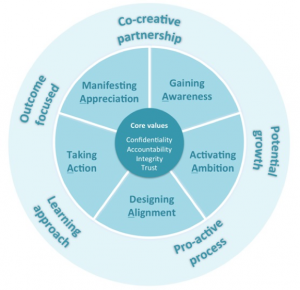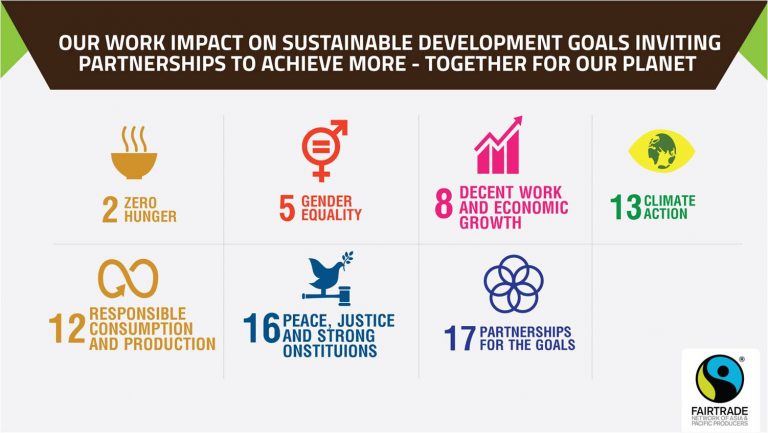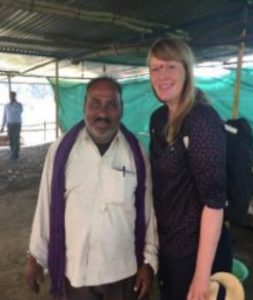
Our partnership ‘chakra’ ensures that we are able to co-create the necessary impact that we collectively wish to see and articulate the same to various stakeholders.
The NAPP Model of partnership is a holistic process based on a sustainable and effective co-creating partnership between the stakeholders: sometimes NAPP is the client and sometimes NAPP is the service provider. We see these as strategic alliances towards shared vision, common goals and collective ways of working.
Therefore, both partners are equally and mutually responsible for the success of the various processes. When as an investor or client, NAPP also sees itself with the responsibility to be the mentor and provide strategic roadmaps and guidelines as direction. In such case, projects will typically have a steering committee. The steering committee is a mentor, responsible to create an environment where the on-ground implementing partner can flourish, to set a strategic and positive learning environment where we can collectively discover new ways of thinking and overcome challenges.
When needed, like us, the partners must be willing to know more about themselves, to be willing to change, to move forward and to seek constant improvements.
Our partnership model is a (powerful) process that includes improving performance, develop potential, and follow a process of empowerment for greater development and impact.
The Model Framework
(a) Co-creating partnership principle
We need a collaborative and supportive space where both sides feel comfortable to share their experience and feelings. Where partners are free and willing to constructively challenge the other to make them consider moving beyond their comfort zone. New grounds are created. Development begins here.
The partners must collaboratively master in building genuine and valuable partnerships. We want to know and understand the partners’ feelings: dreams and fears. All the same, we need to be realistic and SMART. The least common multiple will constitute what we call the ‘shared vision’.
This co-creating relationship has four main core values, which must be mutual in nature: Confidentiality, accountability, integrity and trust. These key-components form the basis of a sustainable and effective long-term alliance.
(b) Potential growth principle
The partners believes in the potential of the partner and helps them to identify their potential, their strengths and hidden talents.
Our model approach is intended to help us as much as our partners towards improvement and growth oriented. We expect that by developing a positive and productive mind-set based on qualities and strengths (and not deficiencies), together we feel more confident in reaching common goals and overcoming challenges.
(c) Pro-active process principle
In today’s organization, proactive behavior is an increasingly important component of performance. We have to collectively take conscious control over their enabling / disabling environment, set goals and find innovative ways to achieve them. The pro-active process principle is all about developing a “problem anticipating” and productive mindset. It always helps to develop ability to visualize alternative responses. Having this (organizational) habit to anticipate problems helps to create a high level of energy needed for breaking through any obstacles and blocks.
(d) The Learning approach principle
The power of co-creation and more so co-creating development is to give the opportunity to learn from success and failure. The shared learning can be disseminated more widely. From designing own solutions to solve problems, from taking necessary decisions, these are aligned with our values and purpose.
The opportunity to learn during the whole process, to learn and discover from each other internal knowledge and strengths further catalyse development. The curiosity of learning is very powerful. It creates value!
(e) Outcome focused principle
Without outcome orientation, the goal will not achieved. Periodic checking-in with the other, throughout the project management process, on the steps that have been undertaken and the (intermediate) goals that have been accomplished.
By being outcome focused, we are more able to implement changes in their lives/workplace and therefore increase their productivity.
















